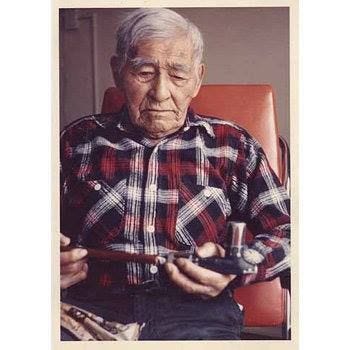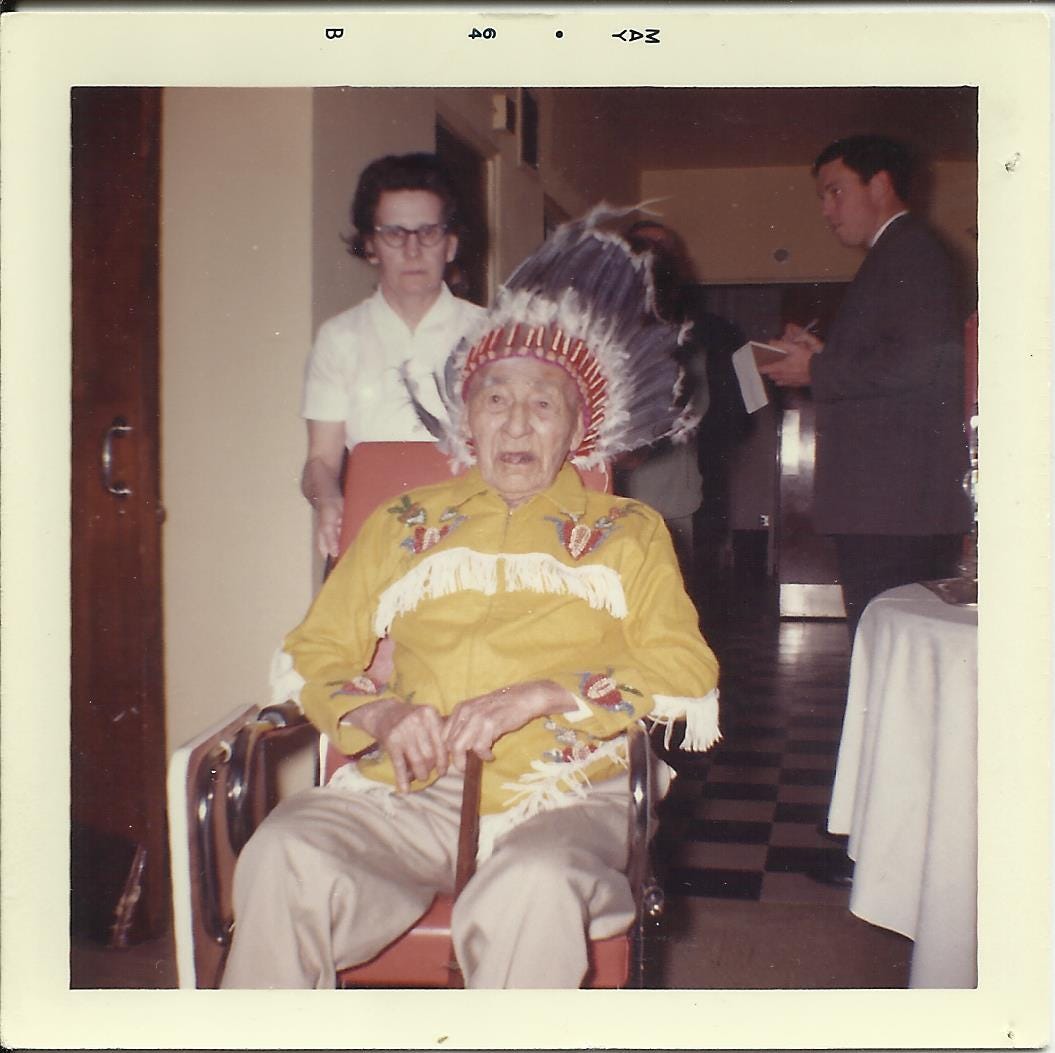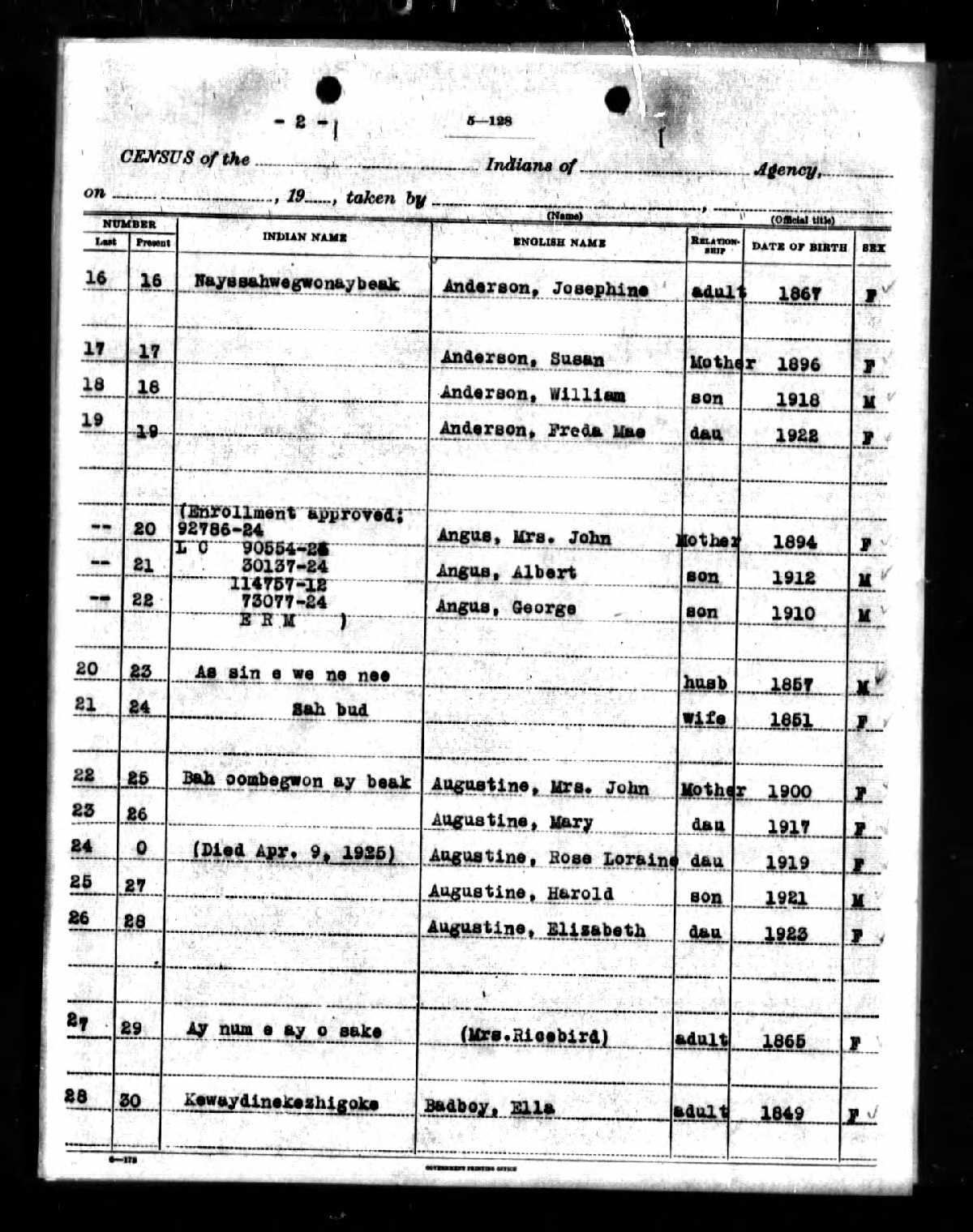In this undated family photo, Kakaygeesick (1844-1968) holds his father’s Treaty #3 pipe.
That he lived to the age of 124 is one of many facts I have corroborated in my research efforts. But it was certainly one of the easier facts to substantiate because his age has long fascinated a white audience.
Four years before he died, the Minneapolis Tribune published a feature story about him and his remarkable longevity. And whenever I talk or write about Kakaygeesick and mention his age it immediately evokes disbelief, as it once did for me.
Kakaygeesick told anthropologists in the 1930s and news reporters again in the 1960s that he didn’t know what year he was born; but he knew John Tyler had been president and that he was 16 years old when Abraham Lincoln was elected.
Here’s a Polaroid from May of 1964 when the town of Warroad celebrated his birthday and elected officials and state dignitaries came to shake his hand and take his picture.
I reexamined my initial disbelief after searching historical archives. While there is room for uncertainty as to his specific birth date and year, there is nothing extraordinary or exceptional about his longevity. Skimming through microfiche records of obituaries of Ojibway men and women, and poring over Indian Census rolls, I discovered many had lived as long as Kakaygeesick.
On this page of the 1929 Indian Census rolls — where I found Kakaygeesick’s daughter Mary listed as Mrs. John Angus b. 1894 — see the bottom entry where the date of birth for Kewaydinekeshigoke (Ella Badboy) is recorded as 1849. The birth date of 1844 for Kakaygeesick no longer seems so far-fetched.
How long Kakaygeesick lived isn’t nearly as interesting as how he lived. So much of that went undocumented. The recent National Geographic documentary and Dan Buettner’s 2008 book have drawn attention to the five blue zones in the world where people are the healthiest and live the longest. I bet the borderlands on Lake of the Woods had been a blue zone.
Why had it been hard for me to believe how long he lived? Because most people today don’t live that long. Because when I look at my family tree, none of my Germanic or Scandinavian ancestors or their peers lived nearly that long. Because the lifespan of white Americans has slowly increased over the past two centuries, as the lifespan of Native Americans declined and continues to do so. Because American Indian and Alaska Native individuals have the lowest life expectancy compared with other races and ethnicities as of 2021, according to the CDC. Because the Native population also has higher death rates. Because I assumed illness and violence not old age is why Indians die.
Because my visceral response of disbelief made it easy to dismiss or deny historical facts rather than examine why I didn’t believe he lived to 124.







Your pieces continue to be fascinating and enlightening - thank you, Jill!
Your piece about this rather wonderful character is very interesting. Thank you for bringing it to us. I have also recently mentioned the Blue Zones in a post, though I approach it from a completely different angle, which is that of a place writer. But just in case it might be of interest... https://yasminchopin.substack.com/p/14-blue-zones.